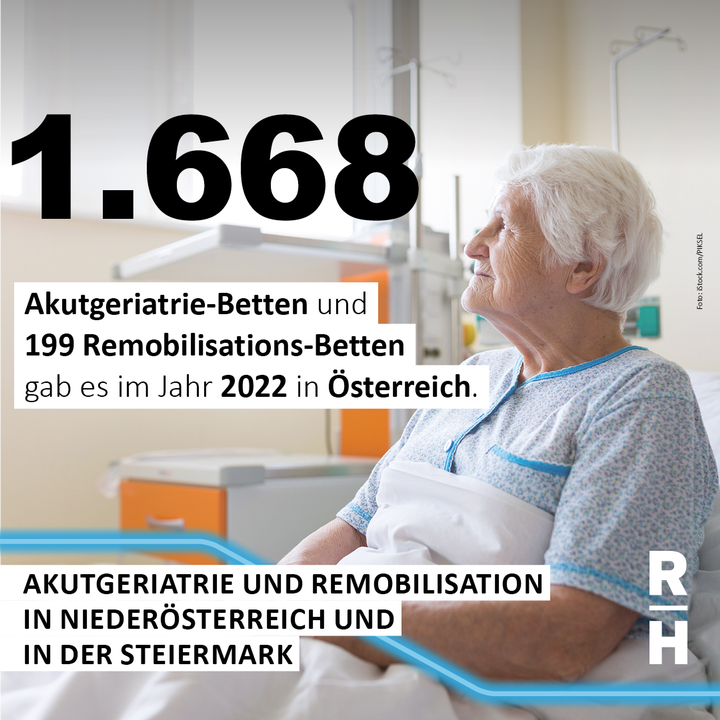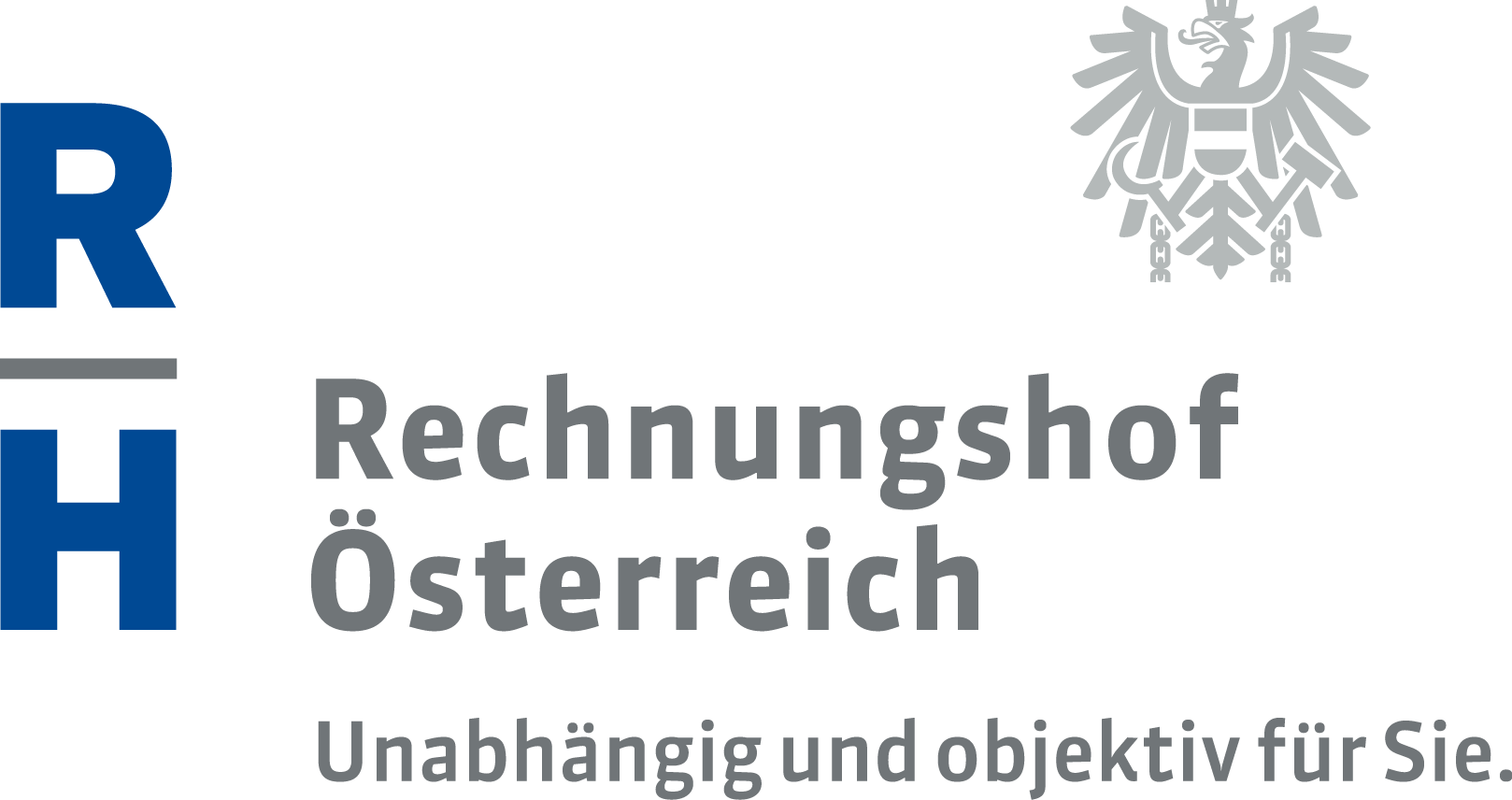Ensuring the best possible healthcare for elderly patients

The proportion of people in Austria aged 75 and over will increase. This demographic change will lead to a rise in healthcare needs among elderly patients. Acute geriatric medicine provides care for acutely ill geriatric patients. It aims at reintegrating patients into their familiar environment following treatment in a hospital. Remobilization has the same goal but is directed at patients of all ages. In its report on “Acute Geriatrics and Remobilization in Lower Austria and Styria” („Akutgeriatrie und Remobilisation in Niederösterreich und in der Steiermark“) published today, the ACA found that health care services provided in Austria are heterogenous. While hospital beds in acute geriatric wards predominated in Styria, Lower Austria only had hospital beds in remobilization wards up until 2022. Both provinces plan to expand the range of healthcare services provided. This requires an overall concept, according to the ACA’s recommendation. Gaps in healthcare, but also parallel structures, are to be avoided. The audited period spanned the years from 2018 through 2022.
In 2022, there were 1,668 beds in acute geriatric wards and 199 beds in remobilization wards in Austrian hospitals. These wards treat patients requiring interdisciplinary care. This means that, in addition to medical and nursing staff, also various therapists – working in the areas of physiotherapy or occupational therapy, for example – provide treatment on these wards. Figures for the year 2022 show that the average age of patients in remobilization wards was around 76 years, which is only about four years below that of patients in acute geriatric wards. This was not the only indication showing that a clear distinction between the two areas of healthcare is only partly possible or appropriate.
In 2022, there were 332 hospital beds in acute geriatric wards and ten hospital beds in remobilization wards in Styria and 37 hospital beds in remobilization wards and three hospital beds in acute geriatric wards in Lower Austria. Lower Austria has also been offering rehabilitative transitional care services in nursing homes for many years. They differ from acute geriatric and remobilization services in terms of non-comparable medical care, among other things. In Styria, at least nine projects in the area of acute geriatrics were carried out in the years from 2017 to 2023. One example is the implementation of mobile geriatric remobilization services in the whole of Styria, which started in 2023.
The ACA recommends that both provinces develop a more long-term overall concept for geriatric patients that encompasses all services provided. An overall strategy should ensure the best possible effective healthcare at the best point of service. Best point of service meaning that healthcare services are to be provided at the right time and the right place to the best possible standards of medical and nursing quality. This should avoid not only parallel structures or duplication of efforts but also possible gaps in healthcare.
Relatively few direct admissions to acute geriatric wards
Patients should be admitted to acute geriatric wards promptly after the actual acute incident. However, the number of direct admissions (primary admissions) was relatively low: for instance, almost two thirds of patients in Styria were in a different ward in the period from December 2021 to end of 2022 – for example in orthopaedic or trauma surgery wards – before being transferred to acute geriatric wards (secondary transfer). In the whole of Austria, 27 per cent of admissions were primary during this period. The ACA recommends analysing why this number is so low.
In addition, there was no specific data on the number of patients in Lower Austria and Styria who would have required acute geriatric care but received care in other wards and what the nature of this care was. Moreover, the ACA was not able to ascertain whether they had access to (physio-)therapeutic services or activating care to a similar extent in other wards – these were often internal medicine wards but also orthopaedic or trauma surgery wards.
Training in geriatric medicine
In Austria, there is no medical specialty training explicitly for geriatrics. After completion of general practice training or medical specialty training (in one or more areas), physicians may obtain an additional qualification. In the period from 2018 to 2023, the number of physicians with an additional specialty and/or a specialization in geriatrics decreased by up to twelve per cent, both in Lower Austria and Styria as well as in the whole of Austria; up to 81 per cent of these physicians were aged 50 and over. The ACA recommends that the Federal Ministry of Health, in collaboration with the provinces, analyse the demand, the training capacities and their actual take-up in the field of geriatrics as well as the attractiveness of specializing in geriatrics.
Lower Austria paid EUR 10.34 million for unoccupied beds
In January 2013, the Health Agency of Lower Austria (since 2020, Landesgesundheitsagentur, previously NÖ Landesklinikenholding) concluded an affiliation agreement with a private operator who planned to establish a special hospital at the time. According to the agreement, the private operator was to provide 60 hospital beds in remobilization wards and assume the care and treatment of patients, including the provision of primary medical care. The Wiener Neustadt provincial hospital (Landesklinikum Wiener Neustadt) was to provide medical specialty care. A guaranteed occupancy rate of 90 per cent was stipulated in the agreement; however, this occupancy rate was reached at no point in the time until 2022. Since the compensation had been calculated based on the guaranteed occupancy rate, Lower Austria’s Health Agency paid a total of EUR 10.35 million for unoccupied beds from 2015 to 2022. It can terminate the association agreement at the earliest with effect from 31 December 2034.
- pdf Datei:
- 4,296.2 KB
- Umfang:
- 114 Seiten
Report: Acute Geriatrics and Remobilization in Lower Austria and Styria (in German)
From June 2023 to October 2023, the ACA audited the healthcare fields of “acute geriatrics/remobilization” (below: acute geriatrics) and “remobilization/aftercare” (below: remobilization) in Lower Austria and Styria.
The audit aimed at
• analysing the (planning) fundamentals for the areas of acute geriatrics and remobilization (including the Austrian Healthcare Structure Plan (Österreichischer Strukturplan Gesundheit, ÖSG) and the Regional Healthcare Structure Plans (Regionale Strukturpläne Gesundheit, RSG) of Lower Austria and Styria);
• describing the nationwide healthcare structures for patients receiving acute geriatric and remobilization care as well as analysing the situation in Lower Austria and Styria; and
• describing and assessing, among other things, healthcare, the range of services offered and provided as well as their evolution at acute geriatric and remobilization facilities of the audited hospital operators.
The audited period essentially spanned the years from 2018 through 2022. The ACA also addressed earlier or later developments as needed.


